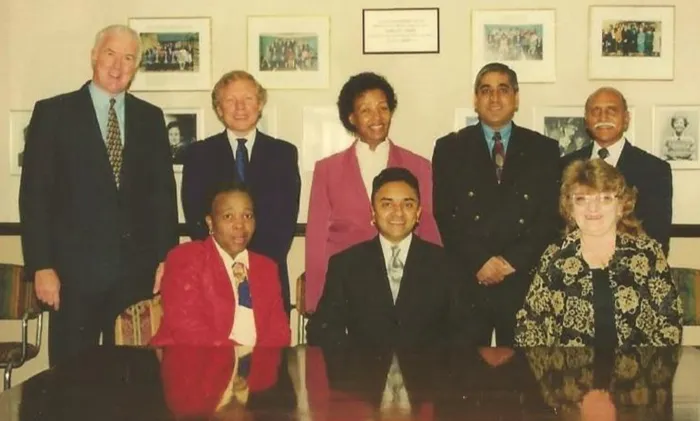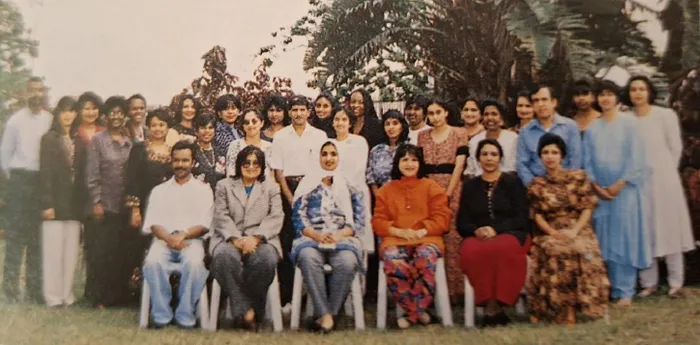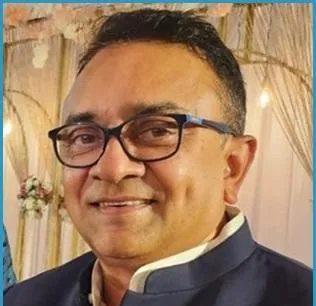Resilience and resistance in the shadow of apartheid and in post apartheid SA
Journey of Durban Indian Child Welfare Society (1977 - 1999)

The first CWDD board of management after the merger in 1999. Front from left: Dr K Milisana, Professor Dasarath Chetty (President) and Shelagh Hurford (Director). Back: J Murray, Julian Beare, BE Bolani, Pravin Ram, and MV Chetty.
Image: Supplied
In part 2, Professor Dasarath Chetty writes on how a historic merger transformed child welfare in Durban, dismantling racial barriers and inspiring generations through a commitment to non-racialism and community care.
IN 1999, child welfare in Durban was unified for the first time in history when Durban Child Welfare (formerly “white”) and Child Family and Community Care Centre of Durban (formerly “Indian”) merged to form the Durban Children’s Society, serving the greater part of metropolitan Durban ranging from Umhlanga in the north to Westville in the west and to Lamontville, Umlazi and Isipingo in the south.
It was the culmination of negotiations that began five years earlier between two volunteer organisations with proud histories and sentimental attachments, marking the end of both organisations' independent histories spanning 82 and 72 years, respectively.
For decades, these two institutions had worked in parallel, serving the same city but separated by the artificial and immoral barrier of race. Their unification was a profound statement of a shared future. Today, CWDD has a combined history of 108 years. Well before the merger, in 1991, the Durban Indian Child Welfare Society officially changed its name to the Child, Family and Community Care Centre of Durban (CFCCCD), after many attempts to gain recognition for this had been declined by the apartheid welfare department.
This represented the culmination of decades of principled struggle against racial segregation in welfare, formally aligning the society's identity with its non-racial practice.

Staff 1997.
Image: Supplied
In the 1980s, as apartheid repression and resistance to it intensified, the DICFWS leadership, including Dr Khorshed Ginwala and Sathish Jaggernath, supported by younger activists, concluded that child welfare was inseparable from the political struggle for justice. The society’s constitutional commitment to removing "detrimental conditions" was increasingly understood as a "commitment to political change".
This journey towards a non-racial ethos and subsequent deliberations on a new welfare policy for SA were part of a long, principled struggle, not a sudden conversion. As early as 1939, Indian welfare societies, led by Durban, were agitating for “Non-European” representation in the whites-only South African National Council for Child Welfare. This foundational rejection of segregation continued for decades, exemplified by a "walkout from National Council’s separate session" in the 1970s - a defiant refusal to legitimise the state's racial fragmentation of welfare.
Such actions were perilous, inviting threats of withdrawn state subsidies and even the detention of social workers. The community’s response to oppression was not monolithic, and the society navigated these complex internal politics.
Figures like PR Pather, who served the DICFWS from the early 1960s, embodied this complexity. While holding a politically conservative stance and willingness to work within state-created structures like the South African Indian Council, he was also deeply committed to community upliftment and had protested the Group Areas Act. The DICFWS provided a space where, despite such political differences, the shared goal of caring for children united the community.
The society’s long-term commitment to non-racial principles gave its eventual transformation its profound moral weight; it was the culmination of a 50-year fight to practice welfare based on human need, not race. The 1980s brought a new crisis to KwaZulu-Natal. Intense political violence, orchestrated by the apartheid state, tore through African townships, leading to mass displacement and the growth of sprawling informal settlements around Durban. This social breakdown left children exceptionally vulnerable, giving rise to the tragic phenomenon of street children.
Fleeing violence and poverty, they survived in the city by begging, scrounging for food, and sniffing glue to numb their hunger, often being lured into crime and sexual exploitation. The all-white Durban City Council’s response was punitive, not compassionate; children were harassed by police and dumped back in the townships in a desperate, repeating cycle. Recognising this failure, the "white" Durban Child Welfare Society approached the DICFWS - run Lakehaven Children’s Home for help in 1987.
This marked a pivotal moment, initiating a practical, multi-racial collaboration to tackle a city-wide crisis. The DICFWS, leveraging Lakehaven's expertise, took the lead in a strategic programme to establish a professional residential facility for street children. This project became the physical embodiment of the society’s non-racialism in action. The construction itself was an act of community empowerment; a partnership with Sunflower Projects trained 300 unemployed people from informal settlements in building skills, and they then built the facility.
The facility was officially opened in 1992, and in a poignant act of ownership, its first residents named it "Zamani," an isiZulu word meaning "We are trying".
As one of the country's first professional residential facilities for street children, the Zamani project was a pioneering act of non-racial, needs-driven welfare, a powerful testament to the society's evolving mission.
Between 1977 and 1999, the society had four presidents - namely Mr KC Naidoo (1977 – 1978), Mr E Buccus (1978 – 1982), Dr K Ginwala (1982 – 1994) and Professor Dasarath Chetty (1994 – 1999).
During this period, notable contributors included Mr BA Naidoo and Dr P Ramesar (both social workers), and board volunteers Professor Lesley Peters, MV Chetty, BR Pillay, S Adari, V Nair, MM Ghazi, S Padmanathan, VSV Pillay, Vaju Kara, RS Moodley, SS Moodley, G Ramsamy, Harry Naidu, Amar Ramkissoon, Pravin Ram, Ringo Naidoo and Deven Shukla.
In 1999, the last group of Patrons of the Society were Mrs G Christopher, Mr BA Naidoo, Dr Ben Ngubane and Mr Ranjith Ramnarain.
DICFWS’s legacy is not merely in the thousands of lives it touched, but in the powerful model of community-driven welfare it created and sustained against overwhelming odds. The society’s contributions were profound and multifaceted. It pioneered a holistic, rights-based approach to welfare, understanding that a child’s well-being was inseparable from the social, economic, and political context. It demonstrated the power of participatory democracy through its innovative local committee system, creating a grassroots network of care that was more responsive and humane than any state bureaucracy.
Throughout its existence, the society was a testament to the resilience of a community facing the brutality of a racist state. It withstood the devastating impact of the Group Areas Act, rebuilding its structures in the barren landscapes of forced-resettlement townships. It provided principled leadership in the long fight for non-racialism, challenging segregation within the welfare sector decades before the fall of apartheid.
The story of the DICFWS is, above all, a story of the enduring power of voluntarism and self-help. In an era where communities were systematically disempowered, the society was built and run by the collective will and social conscience of ordinary people - teachers, housewives, shopkeepers, and professionals - who dedicated their time and energy to a cause greater than themselves.
In a modern world often characterised by rampant individualism or dependency on the state, this legacy of communal responsibility serves as a powerful and timeless illustrative case.

Professor Dasarath Chetty
Image: File
Professor Dasarath Chetty has been a volunteer and leader in the Child Welfare movement in South Africa, having served as President of Durban Indian Child Welfare Society (1994-1999), first President of the merged entity (now Child Welfare Durban and District), first black President of the SA National Council for Child and Family Welfare (2004 – 2008) and President of the transformed Child Welfare South Africa (2008- 2012). He was elected president of CWDD last week.
Related Topics: